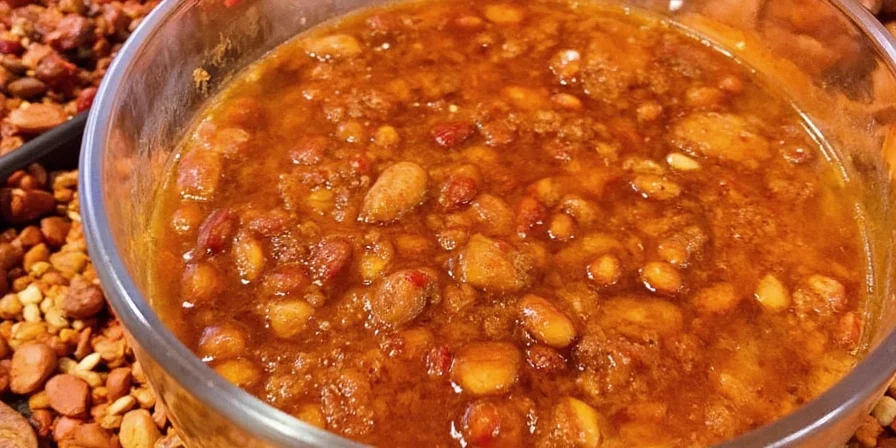Broth is a flavorful liquid made by simmering meat, vegetables, herbs, and spices in water for 1-2 hours. Unlike stock (made primarily from bones for 3-4 hours) or bone broth (simmered 6+ hours for collagen extraction), broth uses meat-forward ingredients with moderate seasoning and is ready to consume directly. This distinction answers the most common search query about broth fundamentals.
Broth vs Stock: Critical Differences at a Glance
| Type | Main Ingredient | Simmer Time | Texture | Salt Level |
|---|---|---|---|---|
| Broth | Meat + light bones | 1–2 hours | Light, sippable | Moderate |
| Stock | Primarily bones | 3–4 hours | Gelatinous when cooled | Low |
| Bone Broth | Bones (roasted preferred) | 6–24 hours | Thick, rich mouthfeel | Moderate |

What Exactly Is Broth Made Of? (Science-Backed Ingredients)
Professional-quality broth requires these five essential components, each serving a specific biochemical purpose:
- Water: Filtered water prevents impurities from masking delicate flavors
- Meat components: Provides immediate flavor compounds (vs. bones which require longer extraction)
- Aromatic vegetables: Carrots (sweetness), onions (umami), celery (vegetal backbone), garlic (aromatics)
- Herbs & spices: Bay leaf (woody complexity), thyme (earthy notes), black peppercorns (warmth)
- Acid component: 1 tbsp vinegar per gallon accelerates mineral extraction without compromising flavor
| Ingredient | Scientific Purpose | Optimal Ratio |
|---|---|---|
| Carrots | Adds sweetness through natural sugars | 1:4 vegetable-to-meat ratio |
| Celery | Lends glutamic acid for umami foundation | 1:4 vegetable-to-meat ratio |
| Onions | Provides sulfur compounds for depth | 1:4 vegetable-to-meat ratio |
| Garlic | Allicin enhances aromatic complexity | 4 cloves per gallon |
| Vinegar | 1% concentration extracts minerals optimally | 1 tbsp per gallon |

The Science Behind Flavorful Broth: What Most Guides Miss
Professional results require understanding these three biochemical principles often overlooked in home cooking:
- Maillard Reaction Optimization: Roast bones and vegetables at 400°F (200°C) for exactly 25 minutes—this creates complex flavor compounds through amino acid-sugar interactions without charring.
- Acid Balance Precision: Maintain 1% vinegar concentration (1 tbsp per gallon) to accelerate collagen breakdown while preventing vegetable bitterness.
- Temperature Control: Simmer at 195°F (90°C)—just below boiling—to extract flavors without emulsifying fats that cause cloudiness.
Broth Making: Step-by-Step Guide for Perfect Results
Follow this optimized method for clear, flavorful broth every time:
- Prep Ingredients: 1 lb chicken thighs (skin-on), 1 quartered onion, 2 chopped carrots, 2 celery stalks, 4 smashed garlic cloves, 1 tbsp peppercorns, 2 bay leaves, 1 tbsp apple cider vinegar, 10 cups filtered water
- Rinse Lightly: Briefly rinse chicken—excessive washing removes surface proteins essential for flavor
- Roast at 400°F for 25 minutes until golden (not blackened)
- Simmer at 195°F for exactly 90 minutes (no longer to prevent bitterness)
- Strain Properly: Use cheesecloth-lined sieve without pressing solids

Broth Flavor Troubleshooting Guide
| Problem | Immediate Solution | Prevention Method |
|---|---|---|
| Cloudy broth | Add egg whites during simmering | Maintain sub-boiling temperature (195°F) |
| Bland flavor | Add 1 tsp fish sauce per quart | Roast ingredients properly before simmering |
| Overly salty | Dilute with unsalted liquid in 10% increments | Add salt only during final 30 minutes |
| Bitter vegetables | Add potato chunks during simmering | Limit simmer time to 90 minutes max |
Regional Broth Variations: Quick Reference
- Pho (Vietnam): Beef broth with star anise, charred ginger, cinnamon (simmer 2 hours)
- Miso Soup (Japan): Dashi base + fermented miso + kombu seaweed (add miso after simmering)
- Caldo de Pollo (Mexico): Chicken broth with epazote + roasted jalapeños (simmer 1.5 hours)

Storage & Shelf Life: Professional Methods
- Refrigeration: Cool within 2 hours, store in airtight container for up to 4 days
- Freezing: Portion in ice cube trays (1 oz increments) for 5 months storage
- Pressure Canning: Process pints at 11 PSI for 20 minutes for shelf-stable storage
Frequently Asked Questions
What's the fastest way to make flavorful broth?
For quick broth (under 2 hours), roast ingredients first at 400°F for 25 minutes, then simmer at 195°F for 90 minutes. The roasting step creates complex flavors through Maillard reaction that normally require longer simmering times.
Can I substitute broth for stock in recipes?
Yes, but with adjustments: broth's moderate salt level means you should reduce added salt by 25%. Its lighter texture works well in soups but may lack the gelatinous quality needed for sauces—simmer broth uncovered for 20 minutes to reduce and thicken if substituting for stock.
Why does my broth become cloudy?
Cloudiness occurs from emulsified fats or excessive simmering causing protein denaturation. Prevent this by maintaining sub-boiling temperatures (195°F) and skimming foam during the first 20 minutes. If already cloudy, add beaten egg whites during simmering—the proteins will trap particles for clearer broth.
Is bone broth worth the extra time?
For most home cooking applications, regular broth provides comparable flavor benefits with significantly reduced preparation time. Bone broth's higher collagen content offers marginal nutritional advantages but requires 6+ hours of simmering. Choose regular broth for daily cooking and reserve bone broth for specific recipes needing its rich mouthfeel.
Implementation Guide: Which Technique Should You Use First?
Start with these three immediately applicable techniques based on your cooking goals:
- For quick weeknight cooking: Implement the 90-minute simmer protocol with roasted ingredients
- For restaurant-quality clarity: Maintain precise 195°F temperature and skim foam early
- For maximum flavor depth: Use the 1% vinegar concentration (1 tbsp per gallon) for mineral extraction

Try one technique this week and notice the difference in your cooking—your kitchen deserves professional-quality broth without professional-level time commitment.











 浙公网安备
33010002000092号
浙公网安备
33010002000092号 浙B2-20120091-4
浙B2-20120091-4